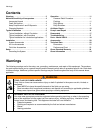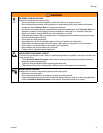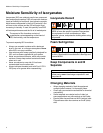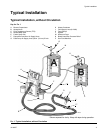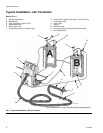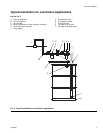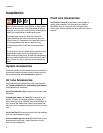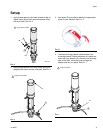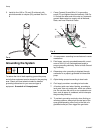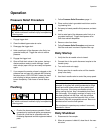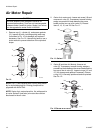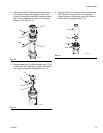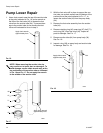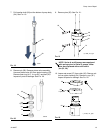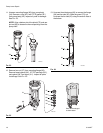
Moisture Sensitivity of Isocyanates
4 311882T
Moisture Sensitivity of Isocyanates
Isocyanates (ISO) are catalysts used in two component
foam and polyurea coatings. ISO will react with moisture
(such as humidity) to form small, hard, abrasive crystals,
which become suspended in the fluid. Eventually a film
will form on the surface and the ISO will begin to gel,
increasing in viscosity. If used, this partially cured ISO
will reduce performance and the life of all wetted parts.
To prevent exposing ISO to moisture:
• Always use a sealed container with a desiccant
dryer in the vent, or a nitrogen atmosphere. Never
store ISO in an open container.
• Use moisture-proof hoses specifically designed for
ISO, such as those supplied with your system.
• Never use reclaimed solvents, which may contain
moisture. Always keep solvent containers closed
when not in use.
• Never use solvent on one side if it has been
contaminated from the other side.
• Always lubricate threaded parts with Part 217374
ISO pump oil or grease when reassembling.
Isocyanate Hazard
Foam Self-Ignition
Keep Components A and B
Separate
Changing Materials
• When changing materials, flush the equipment
multiple times to ensure it is thoroughly clean.
• Check with your material manufacturer for chemical
compatibility.
• Some materials use catalyst on the A side, but
some applications may use catalyst on the B side.
• Epoxies often have amines on the B (catalyst) side.
Polyurethanes often have amines on the B (resin)
side.
The amount of film formation and rate of
crystallization varies depending on the blend of
ISO, the humidity, and the temperature.
Read material manufacturer’s warnings and material
MSDS to know the specific hazards of isocyanates.
Use equipment in a well-ventilated area. Wear
respirator, gloves, and protective clothing when using
isocyanates.
Some materials may become self-igniting if applied
too thick. Read material manufacturer’s warnings and
material MSDS.
CAUTION
To prevent cross-contamination of the equipment’s
wetted parts, never interchange component A and
component B.




